With a new O-ring seal, the 123 distributor may be difficult to fit into the engine housing. A liberal application of grease to the seal and a bit of force will ensure the distributor slips into the hole.
 A+ Vacuum Advance 123 Distributor
A+ Vacuum Advance 123 Distributor
SEL0006
You can wire the 123 distributor straight to the coil, bypassing the white/black coil lead from your Mini's wiring harness: black to -ve, red to +ve.
If your engine develops an intermittent misfire under load, you should replace the ignition coil. A weak coil that just barely functions with points will fail when pushed by the electronics in the 123 distributor which switches the coil on and off much faster.
Any engine running on the street should have the vacuum advance hooked up. This is a fuel economy feature which is in no way detrimental to engine performance. For race engines you may choose not to use it, but unlike mechanical distributors, there is no risk of the advance mechanism locking up and causing an over advance condition.
The vacuum advance is for normal PORTED vacuum, not MANIFOLD vacuum. If your engine is
equipped with a side draft Weber you will not be able to use this feature as it has no vacuum port.
Classic Minis, being what they are, rarely survive with their original distributor or engine specification. If you do not find a suitable description in the application guide (included with your distributor) you can use the tuning guide. NOTE! You should have some idea of what you are doing since it is possible to select a curve that will deliver too much advance and damage your engine.
The 123/Mini distributor is designed to be static timed at TDC which gives fixed timing of 10Ú BTDC up to 1000 RPM for easy checking. If you feel you need more maximum timing, change the curve, not the static timing position.
 A-series 123 Distributor
A-series 123 Distributor
SEL0003
The 123 distributor is NOT user programmable. The market has many products that allow user manipulation of the ignition advance curve. We are offering a plug-and-play solution to the user that does not want, or need, to get heavily involved in engine optimization.
Although 123 distributors are much less susceptible to ingress of water, an ignition shield is STRONGLY recommended for any Mini. The standard ROVER shield used on late model Minis works very well.
A word about ignition coils
Check the resistance of the coil across the primary terminals. Coils with resistance of ~3© can be operated at 12 volts. Coils with resistance of 1.5 ohm or less are 6 volt coils and must be used with a ballast resistor in line with the ignition switch. Ballasted coils were used from about 1974 onward, but they can be found on any vintage car now. They operate at 12 volts to deliver a hotter spark while the starter is engaged, then drop back to 6 volts when powered through the ballast resistor. The 123 will fire either ignition coil and will operate on the 6 volt feed from the coil.
Continued operation of a 6 volt coil at 12 volts will overheat it and cause it to fail.
Coils generally do not fail completely, but work intermittently which is a difficult problem to trace.
Aftermarket coils can be internally ballasted, meaning they have 12 volts supplied to them, but internally they operate at 6 volts. If you have one of these make sure the external ballast resistor is bypassed.
Do not use coils with resistance less than 1 ohm. These draw so much power that they can damage the 123 circuitry. Street engines do not need lightning bolts to fire a cylinder charge unless there is something desperately wrong!
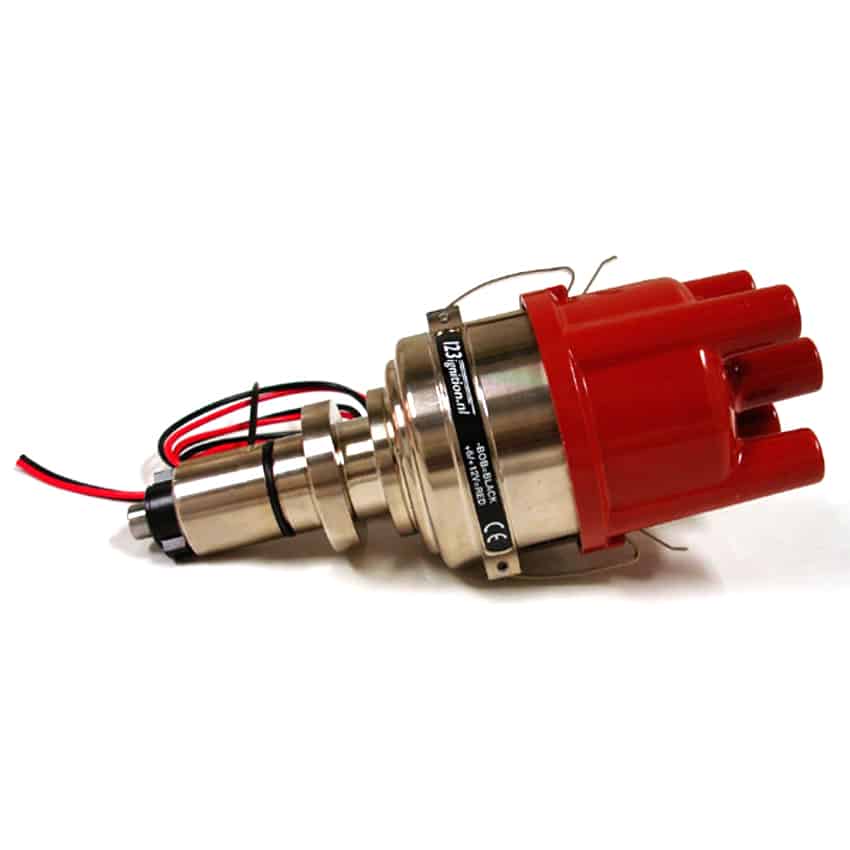 A+ 123 Distributor
A+ 123 Distributor
SEL0005
A word about ignition advance curves
An ignition advance curve is designed to light a fuel-air charge and place the peak cylinder pressure at around 18Ú ATDC. This is a mechanical requirement of all internal combustion engines, but the time it takes an engine to develop that pressure is a function of engine design and operating conditions. A change in any mechanical parameter, particularly one that affects volumetric efficiency, will require a change in ignition advance curve.
Modern fuels are completely different from when BMC series engines were built, so it's expected that an optimized ignition advance curve will, as well, be different now. If the engine works well enough with the factory curve, stick with it, but some experimentation may be beneficial in terms of performance.
The ignition advance curve in a worn Lucas distributor will not be the same as when it was produced and the mechanical advance mechanism may not even be working. It's very likely that the vacuum advance unit is nonfunctional after 40 years of service.
Old school tuners sought the holy grail of distributors: the 23D4 service number 40819 from the Mini Cooper S. The curve in this distributor has to be the strangest duck in the entire line! It is claimed to be right for 970, 1071 and 1275 S engines even though the only thing in common between these engines is the bore diameter. Fact is, it's wrong for all of them, but the curve is so slow that it's safe for all of them, no matter the state of tune. 123/Mini curve 'C' is an approximation of the 40819 curve should you want to try it out.
A word about benefits
The 123 distributor will not 'make' more horsepower. Power is made in the engine so all a distributor can do is ensure the engine makes all the power it possibly can by firing the fuel charge at the right instant.
A freshly rebuilt mechanical distributor with points will be at its optimum for a very short time before the breaker points start to deteriorate. Because the 123 is all electronic, it always delivers optimum ignition performance.
Recurving an antique Lucas distributor is an arduous task because springs are no longer available; you have to make your own. It's impossible to know how the curve is changing if you don't have access to a distributor machine which is an increasingly rare tool these days. The 123 will precisely deliver the curve selected without having to find a distributor machine.
No animals were harmed in the design, testing or manufacture of the 123 distributor line. I'm sure you were wondering.
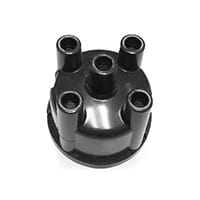
Price: $24.50
View
1/3/2022 12:00:00 AM
29.95
Pending Warehouse Check

Price: $20.95
View
6/18/2020 2:00:00 AM
23.9500
Pending Warehouse Check
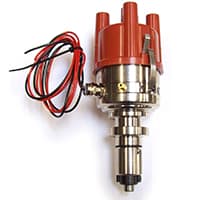
Price: $629.95
View
Special Order
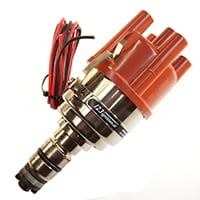
Price: $603.95
View
Special Order
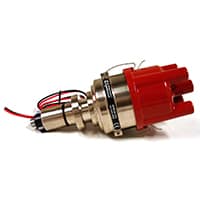
Price: $603.95
View
Special Order
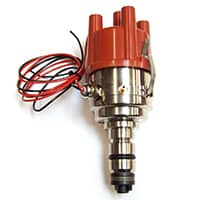
Price: $656.50
View
Special Order